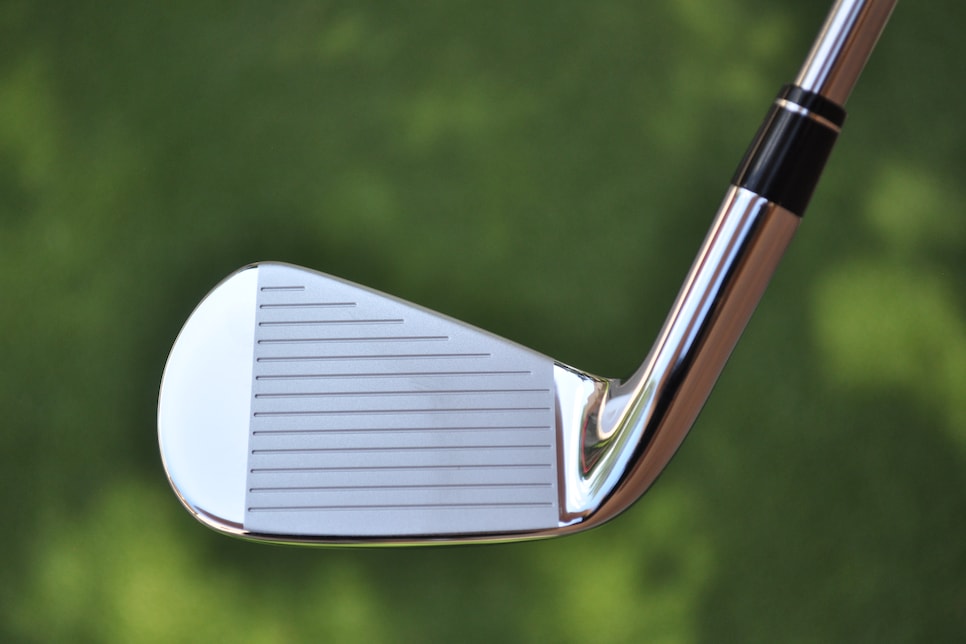WHAT YOU NEED TO KNOW: Better players seeking a blade-esque profile were left out when Callaway released its latest Apex Ai line-up. The introduction of Ai150 ticks all the boxes for golfers on the lower end of the handicap spectrum. The AI-designed set features a 455 face cup on the long and mid-irons (3-7) and 17-4 face material on the scoring clubs (8-PW).
RELATED: Callaway Apex Ti Fusion, Ti Fusion 250 irons: What you need to know
PRICE & AVAILABILITY: The irons cost $379.99 each ($NZ$459.99) and will be available at retail stores from July 25.
3 Cool Things 
1. Centred shots. The centre of gravity (CG) location within a clubhead plays a vital role in determining launch and spin properties. With Ai150, the lofts were adjusted – compared to Ai200 and 2024 Apex Pro – 1-2 degrees in some instances. Although the head shapes are similar, the CG was positioned “as low as possible” to maintain a playable launch window.
“We were able to accomplish this by introducing a wider sole and a thinner VFT face,” said Brian Williams, Callaway’s vice-president of research and design. “The CG on the Ai200 is slightly higher, due to the taller face profile. However, both models have progressive CGs going from low in the long irons, to high in the short irons to help provide optimal launch to spin ratios throughout the set.”
The CG depth in the long irons starts deeper in the head and gets progressively shallower in the shot irons. This is achieved by removing weight from the rear section of the sole.
“By removing weight deep on the sole as you progress through the short irons allows us to manipulate the CG heights as well, by and placing it high internally in the short irons where you need to optimise spin,” Williams said.
The CG was also optimised along the face to centre the impact location and improve energy displacement. The CG is more heelward in the Ai150 wedges to align with traditional wedge CG locations, due to the longer hosels and lack of tungsten in the head.
“The Ai200 has constant hosel lengths, which allows us to maintain a centred CG throughout the set,” Williams said. “This again allows the Ai200 to have a very consistent CG providing more MOI, where Ai150 is focused more on speed in the long [and] mid irons with a more traditional tour performance in the short/wedges.”

2. Mix and match. With mixing and matching iron models becoming more prevalent at the recreational level, the addition of Ai150 opens the door for better players to blend all Apex Ai models, if they so choose.
The most obvious setup is a combination of Ai150 and Ai200. However, the lofts aren’t identical, which means slight tweaks might need to be made to ensure proper gapping throughout. This is where a certified club-fitter is an invaluable resource.
In many cases, golfers are unaware of the slight modifications that may need to be made to dial in a set of irons. Instead of simply buying pre-built parts and attempting to create a set with little oversight, Callaway is adding a barrier to entry in the form of a fitting that’s required before a blended set of Ai150/Ai200 is built.
“We did design the Ai150 and Ai200 to be compatible and work together as a combo set,” Williams said, “but unlike past years where we pre-built and stocked the items, they have to be ordered as part of a fitting, which will ensure any proper bending needed for the player on loft/lie. So, available, but not necessarily featured.

3. Smart face. Callaway leveraged real-player data and artificial intelligence to create a face that helps retain ball speed and manage spin, regardless of impact location. The Ai10x face has been used on previous iron designs and was optimised for each club in the Apex Ai150 set.
While the face technology is consistent throughout, the face material transitions from a lively 455 face cup in the long and mid-irons (3-7) to a more sturdy 17-4 in the scoring clubs (8-PW).

